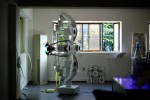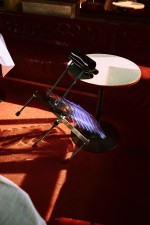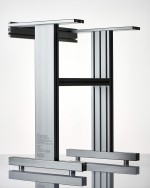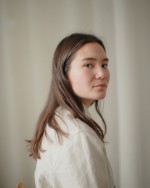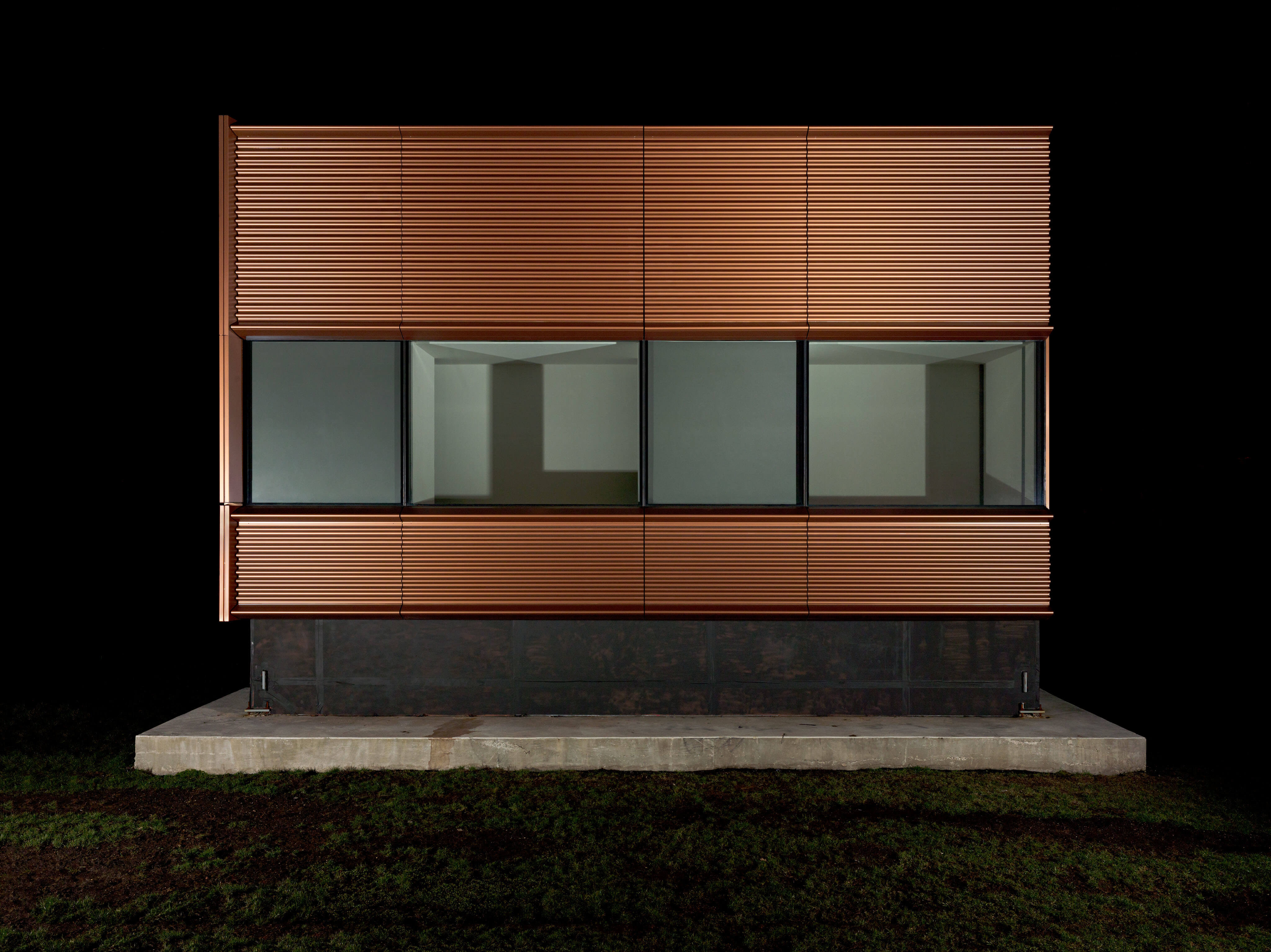Lorenz Bachmann
Echoes of Architecture
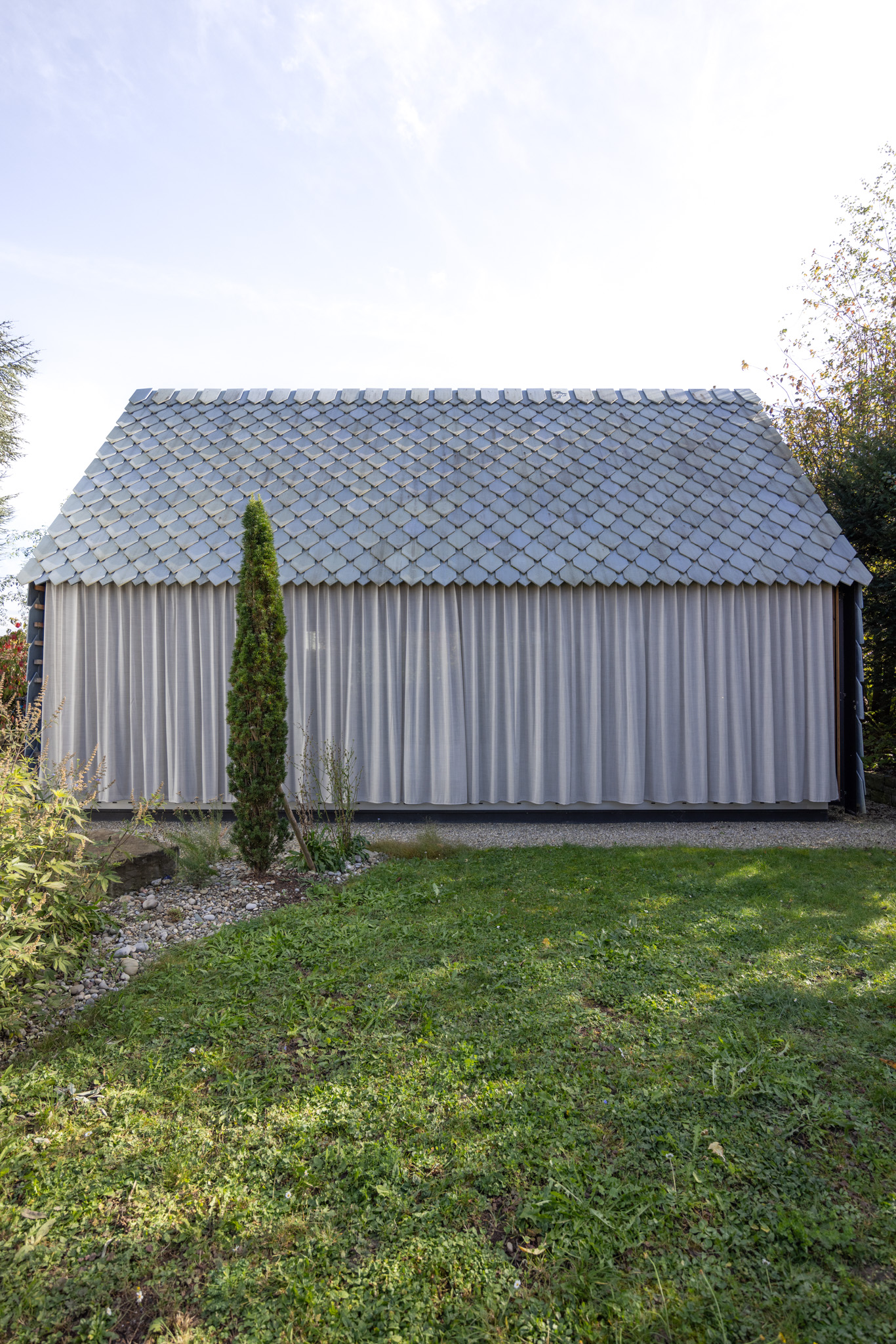
I grew up in a family of musicians. My father played the cello in an orchestra, and my mother taught violin at home. Our house was filled with instruments of all kinds. One of my favorite places was the space beneath the grand piano. The heavy body of the instrument, resting on its three thin legs, felt like a shelter, and I could immerse myself in the sound.
From time to time, I attended my father's orchestral concerts. I often felt lost in the vast lobby and music hall of the Herkulessaal in Munich. But when the orchestra started playing below, I would doze off on the velvet-covered balustrade and begin to dream.
Playing music changes my perception. I "see" with my ears and lose all sense of time. I enter a state of flow, where my ears and fingers work together, bypassing my consciousness. In architecture, I enjoy working intuitively with my hands and discovering spaces through making. My favorite way of exploring spatial ideas is through casting. First, I construct the space as a solid mass. This sculptural process helps me understand the volumes, proportions, and connections of spaces. The voids represented as masses are always beautiful sculptures, though I know I’ll have to destroy them in the next step. Much like playing music, casting is an irreversible performance.
One day, our aunt Elisa asked my cousin Georg and me to imagine a pavilion for her grand piano—a space entirely dedicated to music, where she could practice and teach. She envisioned a quiet and magical space as an integral part of her flourishing garden.
To find a spatial answer, we worked exclusively with physical models. In the end, the simplest model evoked the most convincing spatial sensation: a pitched roof resting solely on its gable facades, with the sides left completely open.
The space is peaceful and focused. When I play cello in the pavilion, I hear every note, every scratch with crystal clarity. I remember the child I was, sitting under the grand piano and immersing myself in the sound. Through the moving curtains, I gaze into the beautiful garden and lose all sense of time.
The Music Pavilion for a concert pianist is a single-story building set in the middle of a flowering garden. Blue fiber cement shingles envelop the building. On both sides, the music room opens completely onto the garden. The exterior flows through the interior.
Designing a space for music is the most wonderful task. Sound becomes the architect's ally. It needs plenty of air to expand and responds sensitively to the surfaces of the space.
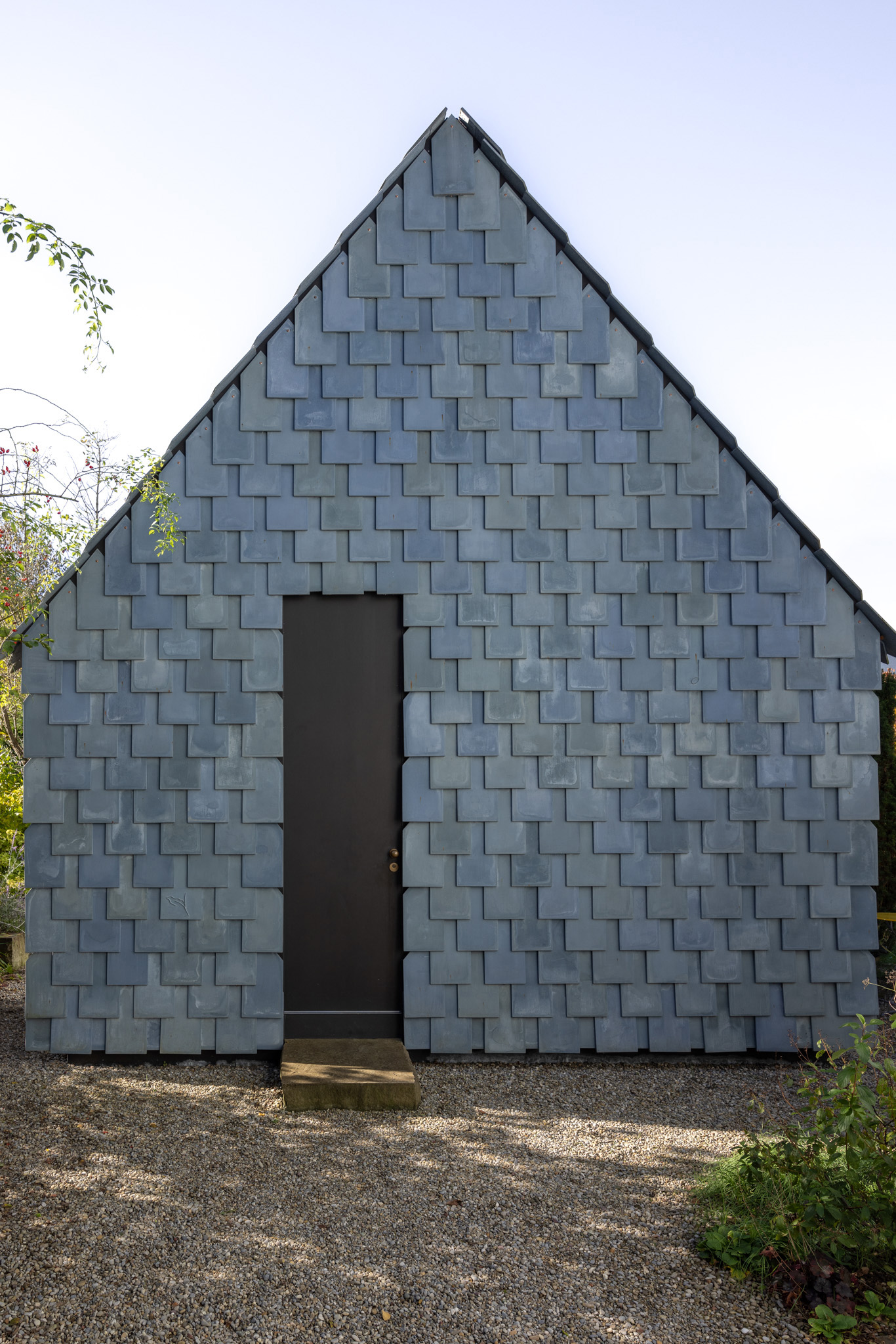
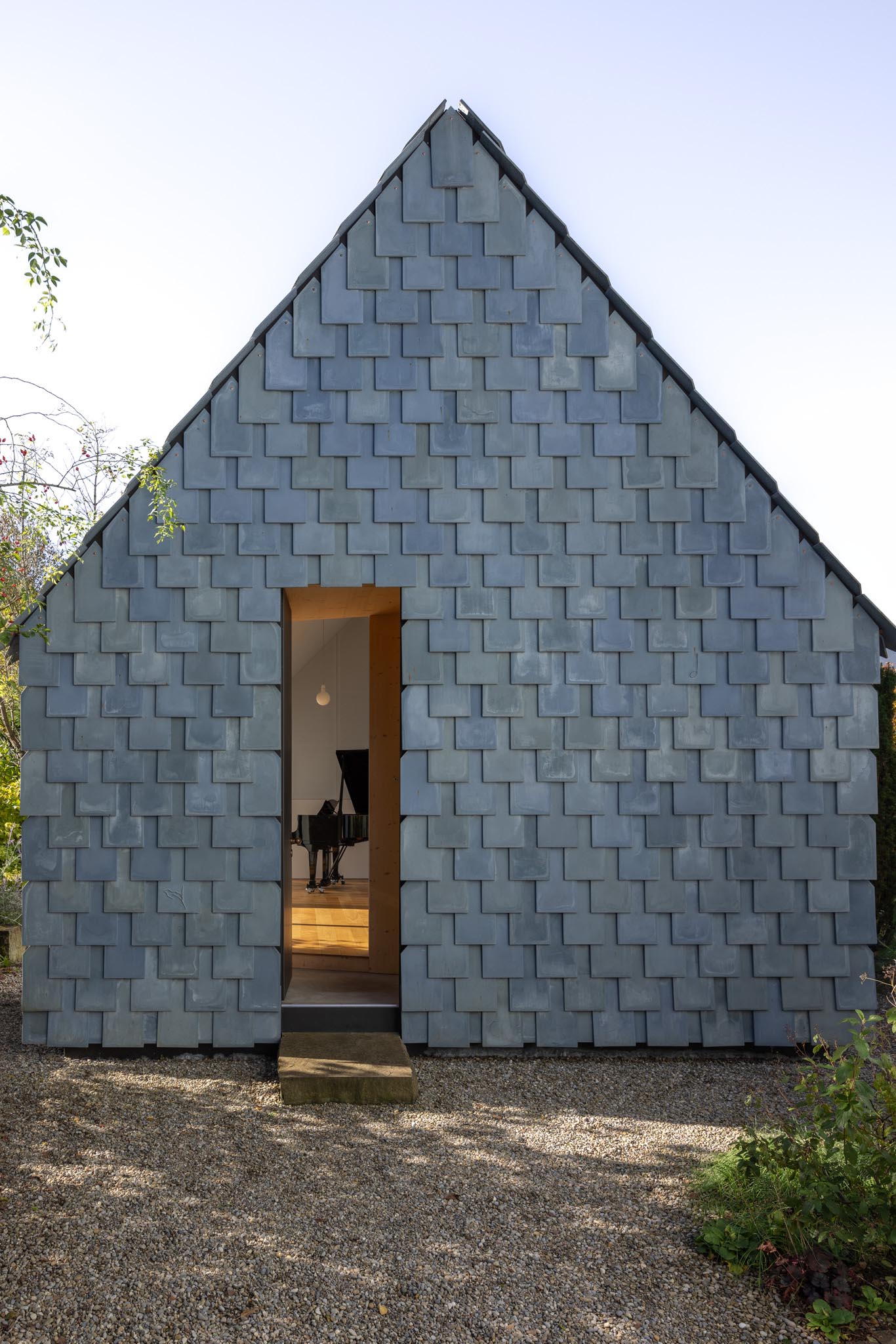
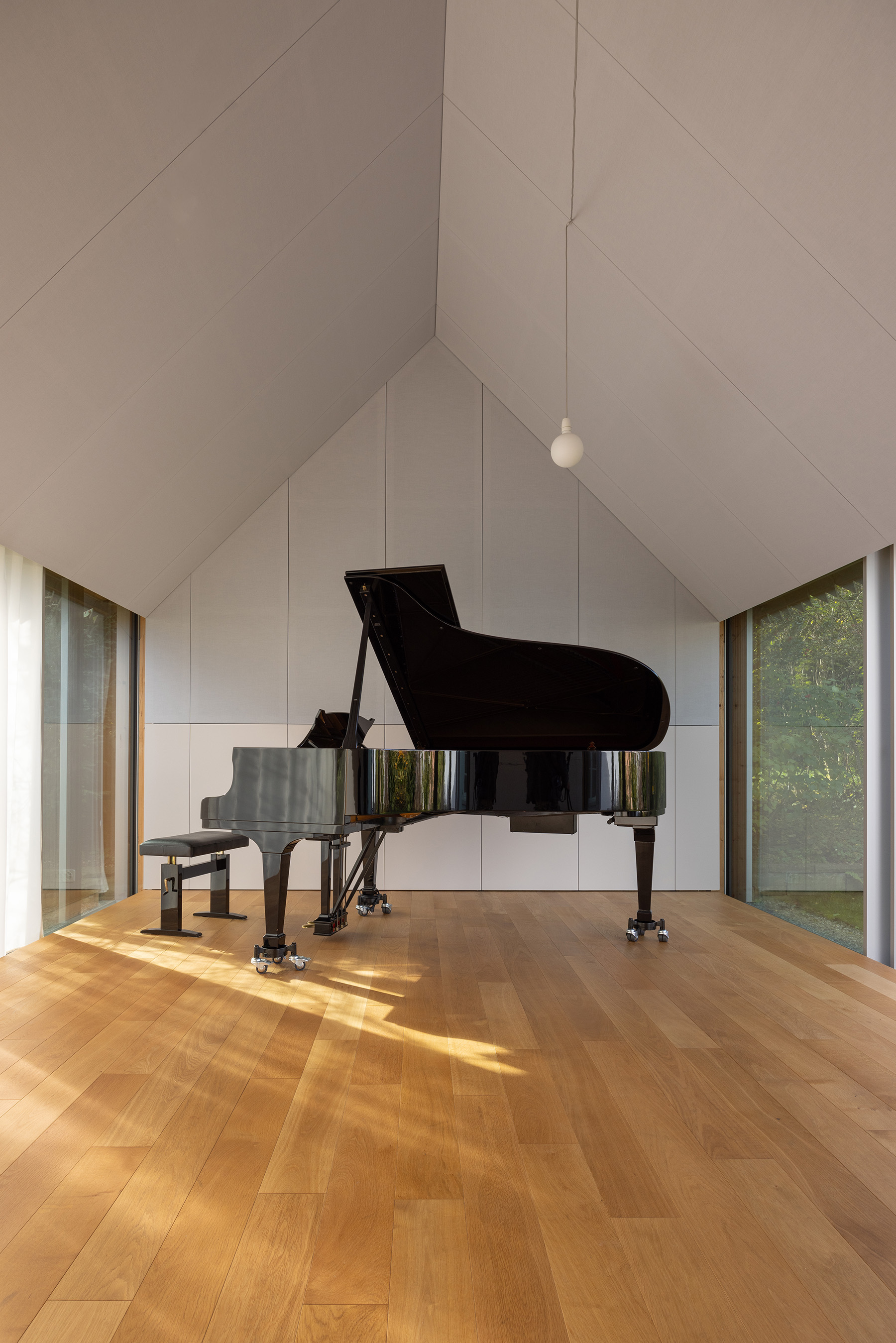
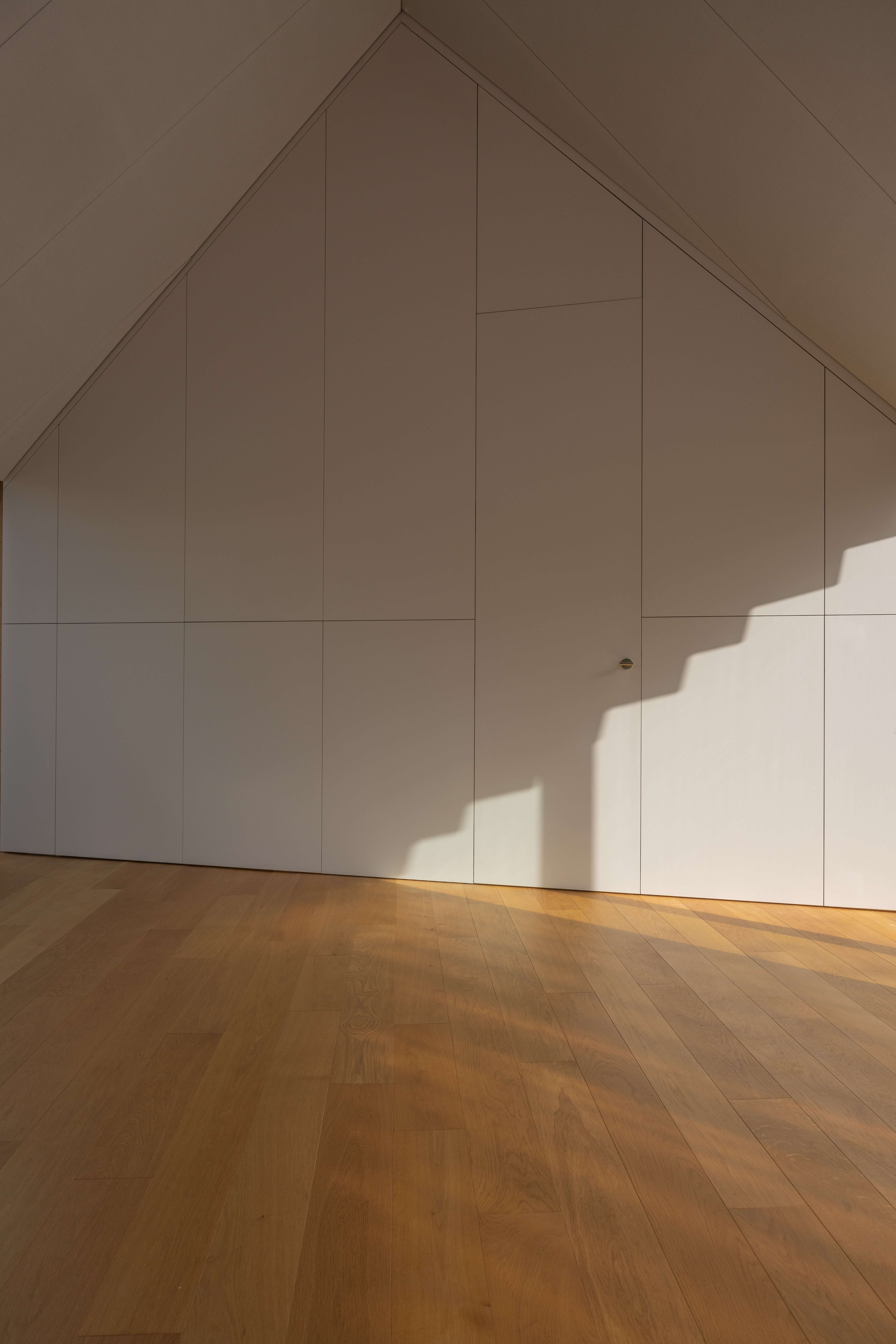
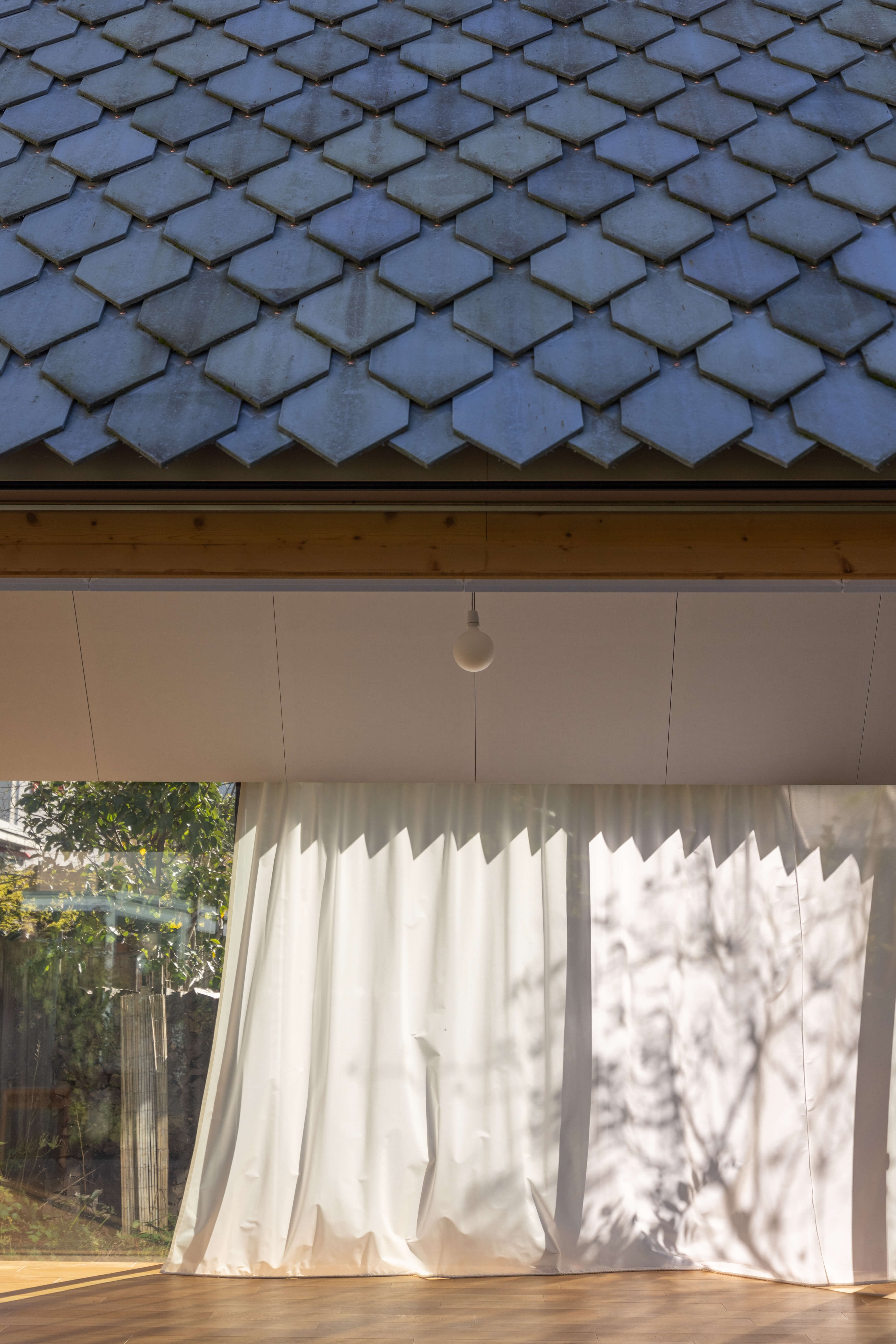
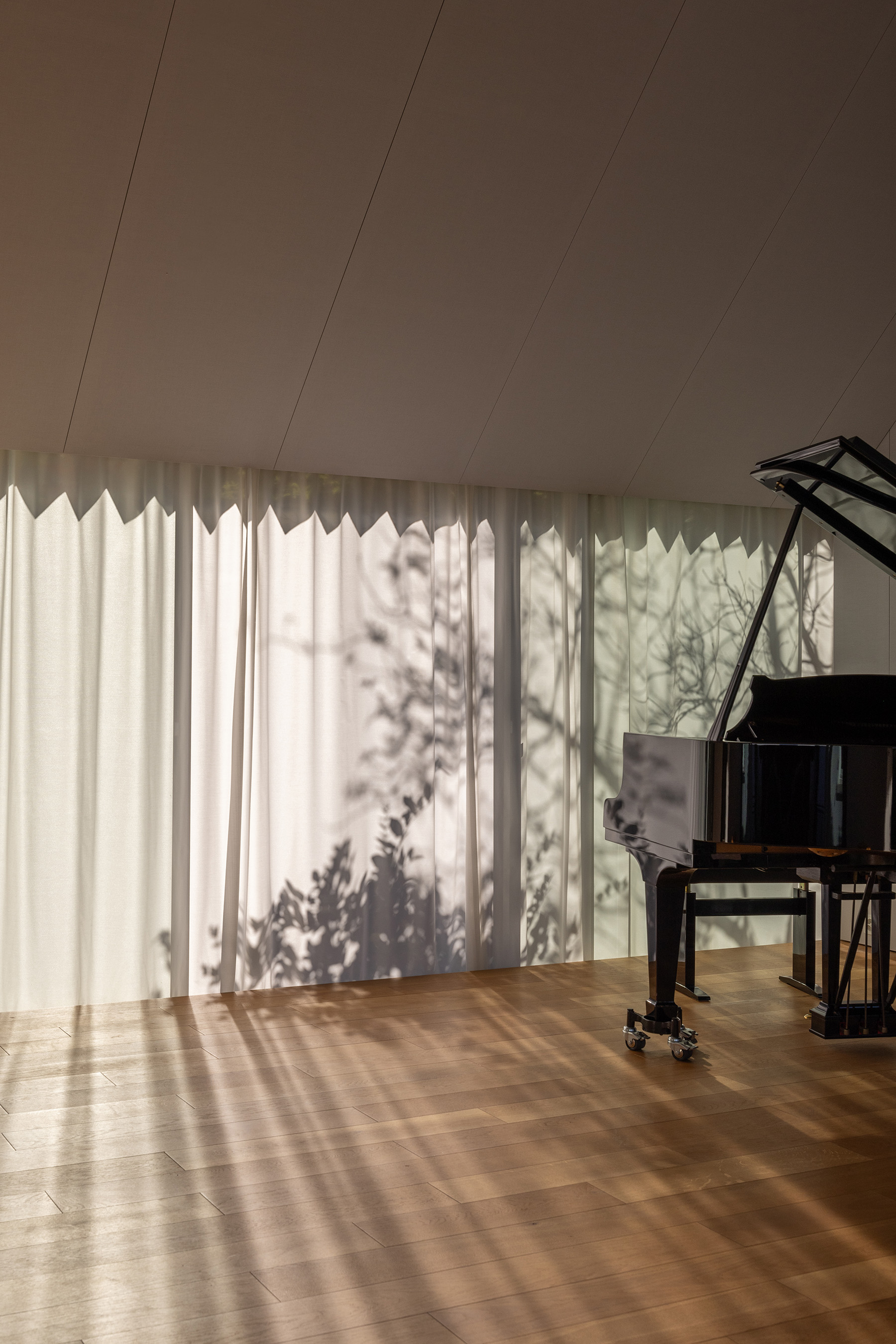
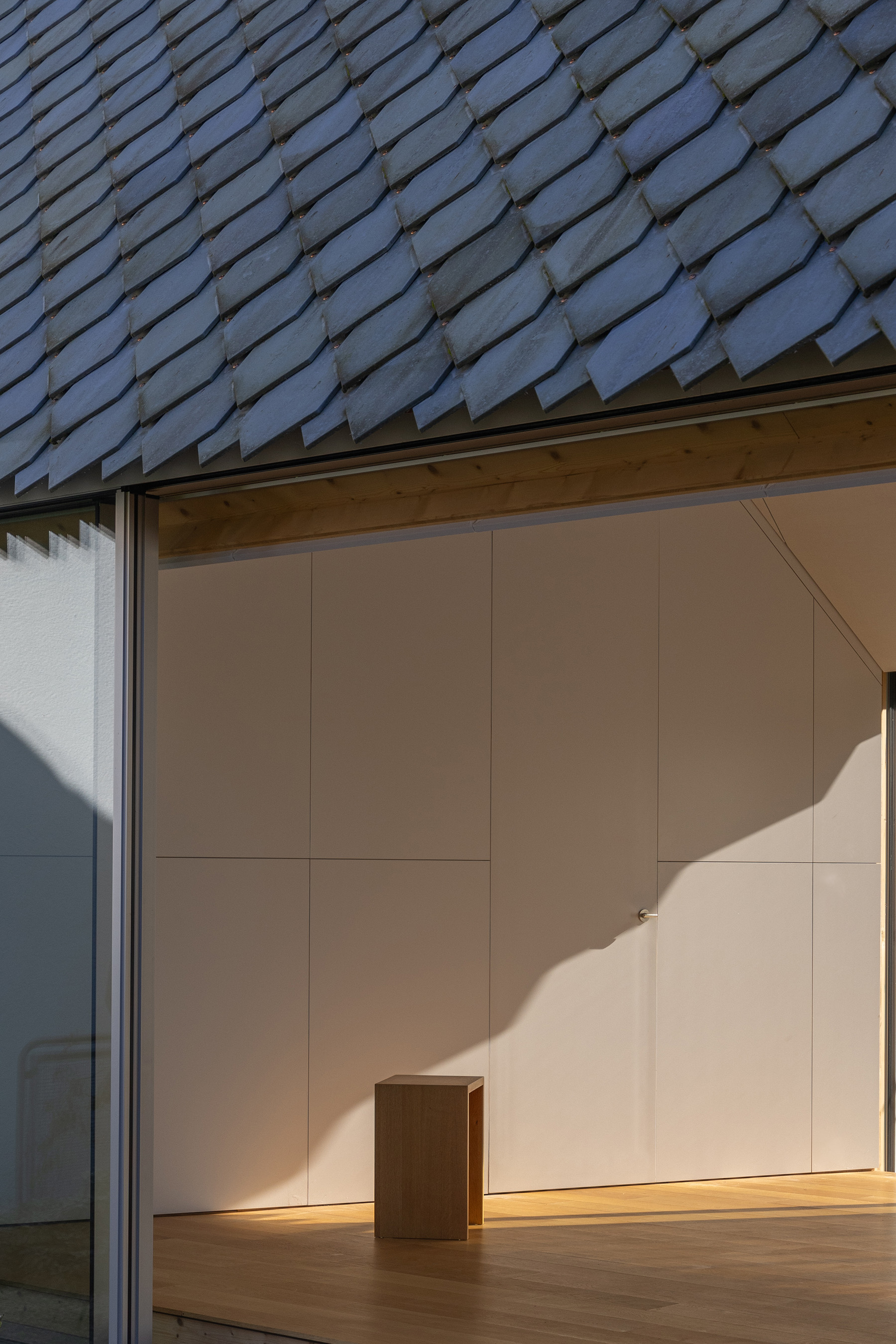
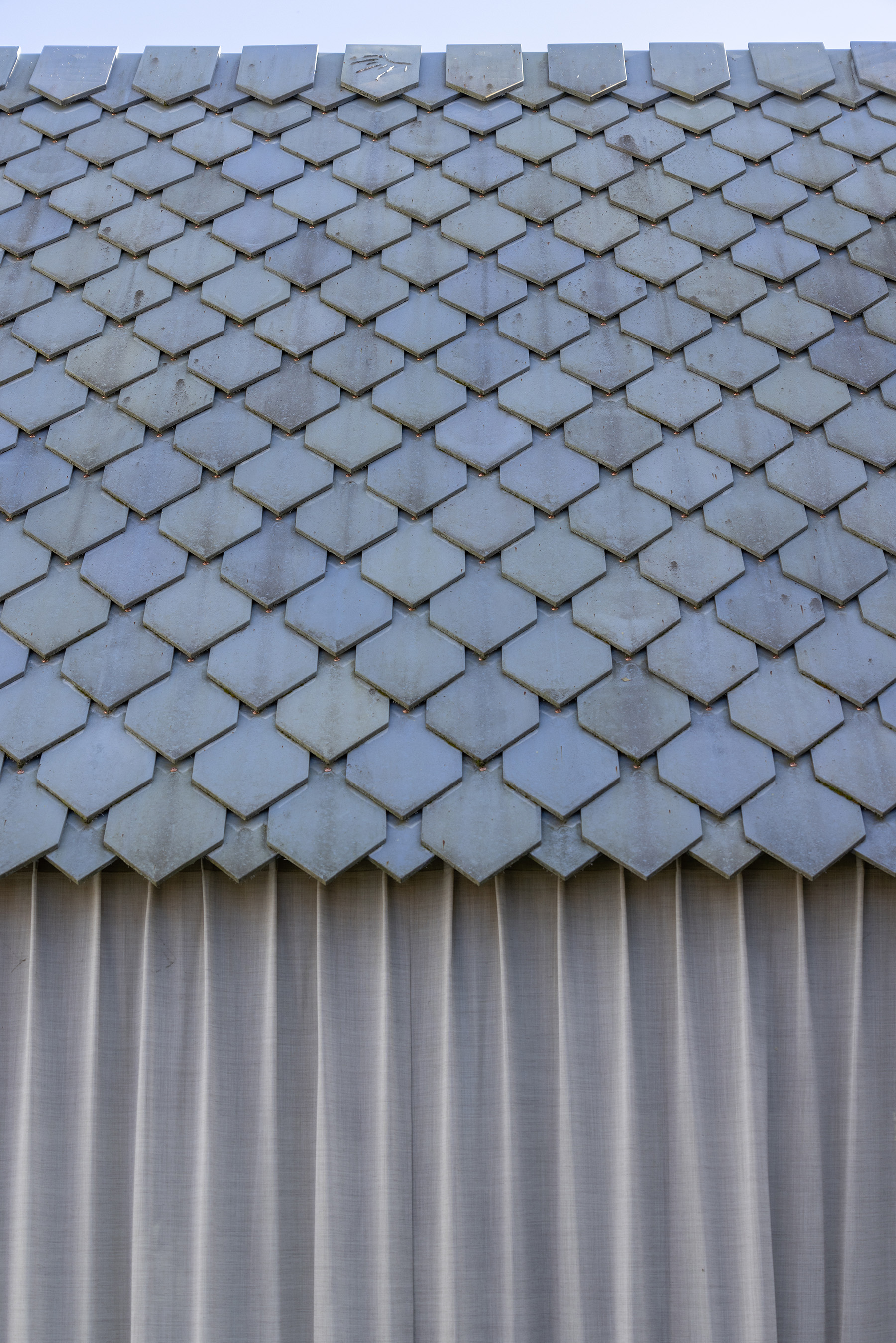
Playing music changes my perception. I “see” with my ears and lose all sense of time.
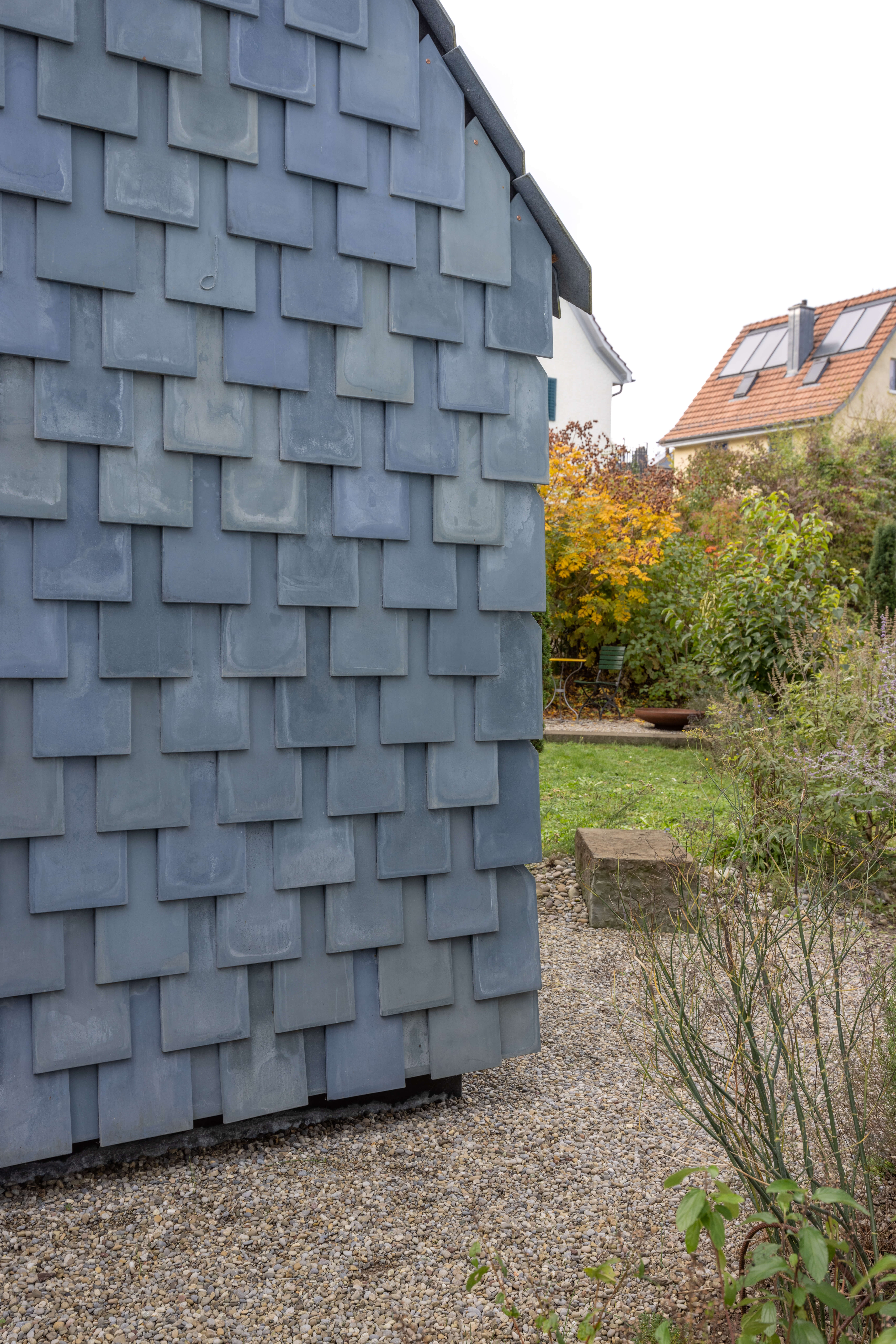
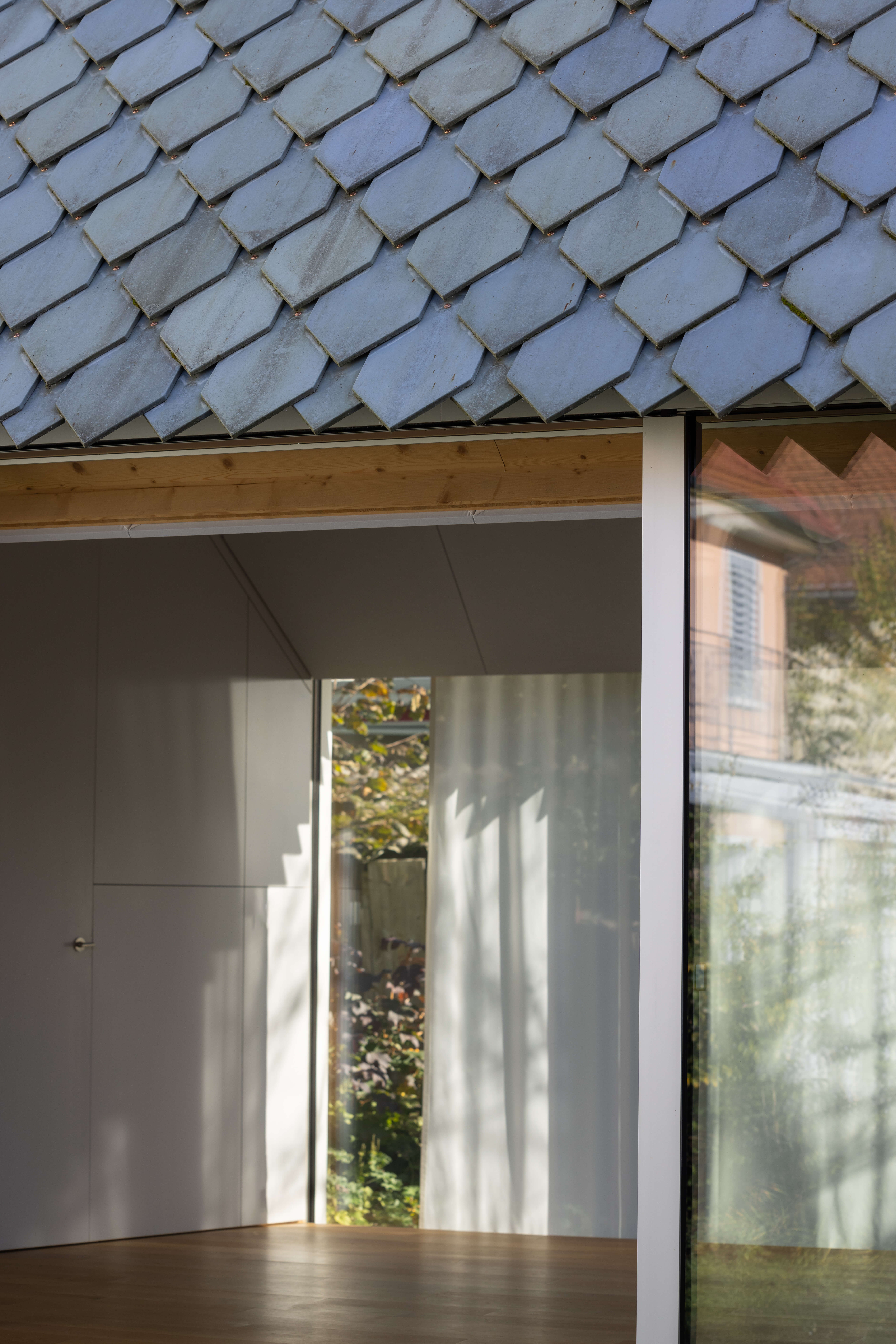
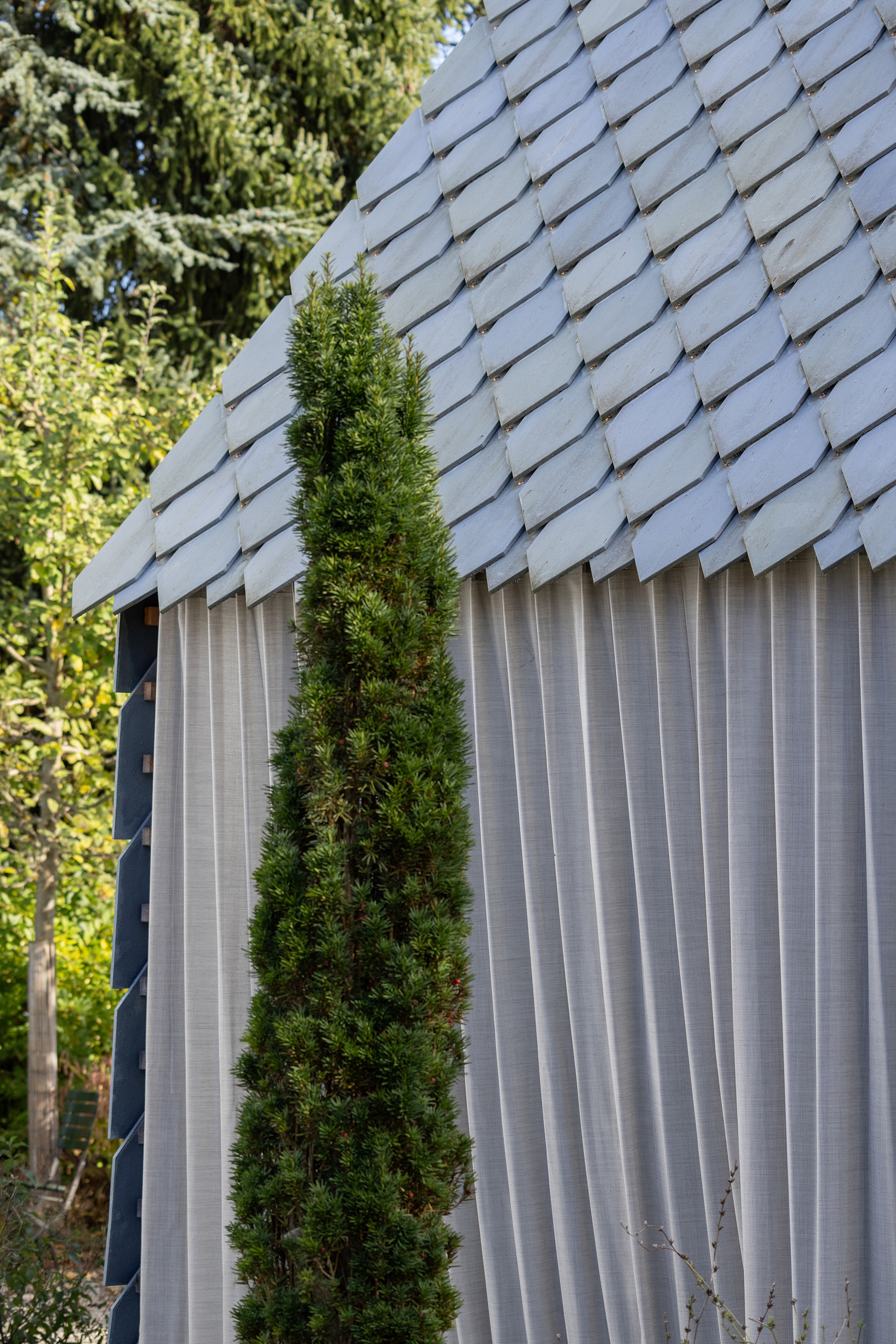
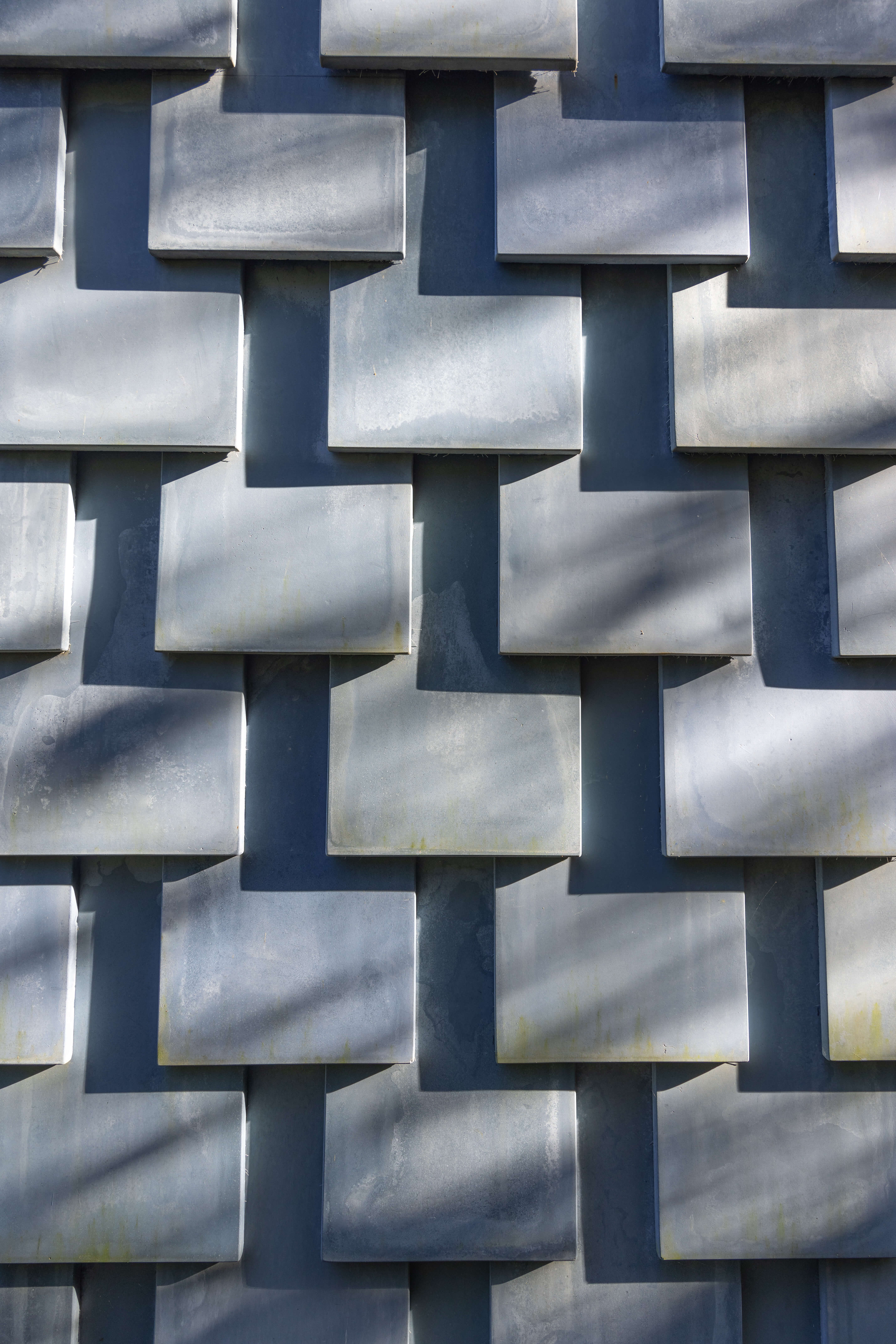
Words by Lorenz Bachmann, Photography by Gregory Tsantilas / Music Pavilion, Winterthur, Switzerland 2019–2020 / Architects Lorenz Bachmann, Atelier Void / Facade in collaboration with Solanellas Van Noten Meister / Landscape Grünbart / Acoustic Applied Acoustics GmbH / Ingenieur Holzbaubüro Reusser
